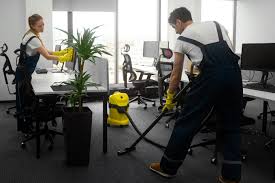Introduction:
In the dynamic world of real estate, the way homes are presented to potential buyers has undergone a significant transformation. Traditional home staging, a practice that involves physically furnishing and decorating a property for sale, now competes with its virtual counterpart. In this article, we will delve into the debate of Virtual vs. Traditional Home Staging, analyzing their respective benefits and drawbacks to determine which approach yields better results.
The Rise of Virtual Home Staging:
In recent years, Home staging Virtual has gained prominence, thanks to advancements in technology and the growing prevalence of online property listings. Virtual staging involves the use of computer-generated images to showcase a property’s potential. This method provides a cost-effective and flexible alternative to traditional staging, allowing for quick adjustments and revisions.
Cost Considerations:
One of the primary advantages of virtual home staging is its cost-effectiveness. Traditional staging involves the rental or purchase of furniture, decor, and the services of professional stagers, which can be a substantial investment. In contrast, virtual staging eliminates these physical costs, making it an attractive option for budget-conscious sellers.
Flexibility and Customization:
Virtual home staging offers unparalleled flexibility and customization. Digital renderings allow for easy experimentation with various furniture styles, color schemes, and layouts, catering to diverse buyer preferences. This adaptability is a significant advantage, especially in a market where trends and buyer preferences are constantly evolving.
Visual Appeal and Photorealism:
Advancements in virtual staging technology have led to highly realistic and visually appealing renderings. High-quality images can be created, showcasing a property in its best light. The photorealistic nature of virtual staging can captivate potential buyers and spark their imagination, helping them envision the space as their future home.
Traditional Home Staging:
While virtual staging offers undeniable advantages, traditional staging has its own set of merits. The tactile experience of physically staged homes can create a more immersive and emotional connection with potential buyers. The tangible presence of furniture and decor allows visitors to experience the flow and atmosphere of a property firsthand.
The Importance of Physical Presence:
One notable drawback of virtual staging is the absence of physical elements that buyers can touch and feel. Traditional staging provides a sensory experience that virtual methods cannot replicate. For some buyers, the physical presence of furnishings can enhance the perceived value of a property and contribute to a more positive impression.
Balancing Act: Hybrid Approaches:
Recognizing the strengths of both virtual and traditional staging, some sellers and real estate professionals are adopting hybrid approaches. This involves using virtual staging for online listings and traditional staging for in-person showings. This balanced strategy aims to leverage the benefits of each method, catering to a broader audience.
Conclusion:
In the ongoing debate of Virtual vs. Traditional Home Staging, there is no one-size-fits-all answer. The choice between the two depends on factors such as budget constraints, target audience, and the specific property in question. Virtual staging offers cost-effective flexibility and visual appeal, while traditional staging provides a tangible, immersive experience. As the real estate industry continues to evolve, a combination of both approaches may emerge as the most effective way to showcase properties in a competitive market.












Add Comment